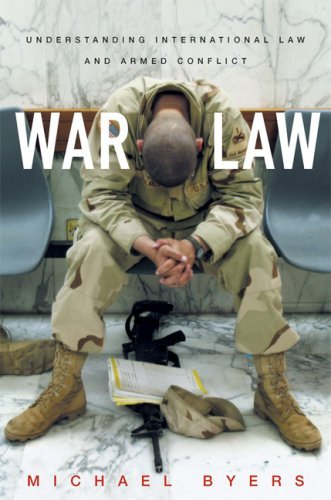If there is one area in the political and legal realm where the average US citizen is more inept than normal it is most likely International Law. Most still struggle with understanding or even memorizing the Bill of Rights let alone bothering with the UN Charter. Fortunately Michael Byers has produced an excellent book, War Law: Understanding International Law and Armed Conflict, which not only is relevant and informative but is easily read by the laymen among us and also very enjoyable.
War Law: Understanding International Law and Armed Conflict breaks down modern international law with regards to the use of force, more specifically instances outside of the UN Security Council’s authorization. Byers split the book into four different parts, each with 3 chapters.
In Part I, United Nations Action, Byers gives a brief historical background of the UN and customary International Law, touches on the differences between treaties and resolutions and explains the powers of the Security Council and its expanding powers since the end of the Cold War. In the introduction we are told that much of the book focuses on the US because of its immense military might unrivaled since the Roman Empire. The most interesting aspect of Part I may be Byers’ chapter on Implied Authorization and Intentional Ambiguity where he accuses the US of being intentionally ambiguous versus the rest of the world that desires a textual anchor.
The book peaks in Part 2, Self-Defence (Byers is Canadian, hence the spelling). Essentially the only time force is justified legally without Security Council Authorization is in Self Defense. War Law visits the controversial issues of “necessity and proportionality”, the limits of self defense, self defense in the face of terrorism and finally pre-emptive strikes as self defense. These are the issues that will shape the world in the future and what has driven recent history. In this Part, Byers uses several examples from recent history but focuses on the US and Israel, framing their self-defense justifications in a precarious light.
Part 3 examined if there is basis in law for a unilateral intervention on the justification of Pro Democracy or Humanitarian interests. He concludes that there are no real precedents after examining some historical instances that some propose. Part 4, International Law during Armed Conflict, is probably the most damning section on US Policy. The section asserts that the US has violated international law on numerous fronts including against civilians, unlawful treatment of enemy combatants (Guantanamo Bay), the Abu Ghraib incident, and its non cooperation in International Courts.
In the epilogue Byers solidifies his ongoing assertion that the US essentially ignores international law when it does not serve its immediate interests. The US therefore further destabilizes international law and increases the likelihood of states using force. Byers makes a compelling 3 prong case of why the US attitude is the way it is and why it is unlikely to change in the near future.
Whether one agrees with many of the assertions that Byers states, it is hard to argue that War Law: Understanding International Law and Armed Conflict is not well written and easy to read for the non legal mind. If looking for a primer on international law, especially with regards to current day events, be sure not to miss this book.

Nice information….